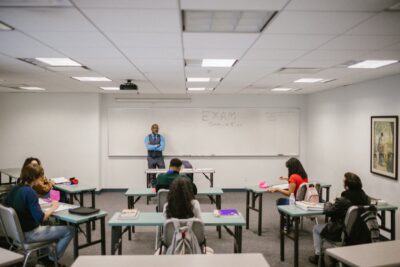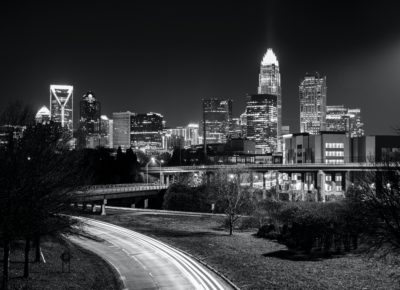

|
|
By the conventional standards of public affairs journalism, Gov. Roy Cooper delivered a couple of items of hard news in his speech at the myFutureNC event on Monday. He said North Carolina may have to exceed its current goal for education beyond high school, and he called on legislators to “stop with the cutting taxes for the wealthy.”
But the Democratic governor’s rhetorical flourishes to establish context also deserve attention. North Carolina, he said, has experienced an “economic explosion” in job growth. “It’s stunning,” he said, “the amount of people who’ve decided to move here.”
Indeed North Carolina has experienced a dramatic transformation in its economy and demography over the last two decades of the 20th century and the first two decades of the 21st. Now, nearly half of the state’s 10.5 million people were born elsewhere — in another state or another country.
Clearly, as the state has modernized and diversified its economy, it has imported talent. Projections indicate that North Carolina will continue to grow through in-migration. At issue is whether the state will rise to the educational challenge of preparing more of its born-here young people for the high-quality, higher-paying jobs it is attracting.
In the 20th century, two huge movements of people reshaped the face of America. And now, in a country where change is constant, counter-movements have developed.
In the Great Migration, Black people from the farms and small towns of the South fled to the industrial cities of the Northeast and Midwest — and even to California.
Brookings Institution demographer William H. Frey has documented extensively what he calls the New Great Migration. “The reversal of the Great Migration began as a trickle in the 1970s, increased in the 1990s, and turned into a virtual evacuation from many northern areas in subsequent decades,” he writes. “The movement is largely driven by younger, college-educated Black Americans, from both northern and western places of origin. They have contributed to the growth of the ‘New South,’ especially in Texas, Georgia, and North Carolina…”
The second significant movement is known as “white flight.” With a stimulus from post-World War II federal housing financing, millions of white Americans moved from mid-city to outlying suburbia. As North Carolina population growth accelerated after 1970, its cities and their metropolitan regions expanded in a rather suburban style.
In recent years, suburban communities have attracted Black, Latino and Asian in-migrants. In his study of types of North Carolina counties, Duke University professor Mac McCorkle illuminates the complexity of modern North Carolina; he categorizes 28 counties as a “countrypolitan” blend of rural and metro.
From its own analysis of census data, The Washington Post now reports a substantial movement of white Americans back into the urban core. “The White population increased between 2010 and 2020 in hundreds of neighborhoods at the center of many large cities, even as it declined almost everywhere else in the country,” reported the Post, which listed Raleigh 17th among the cities with census tracts of high white population gains.
Reports from Carolina Demography and the demographer of the Office of State Budget and Management offer additional insights into North Carolina’s ongoing transformation. From 2010 to 2020, the state’s child population increased by only 2,654 while the adult population grew by 901,000. The “aging” of the population is expected to continue apace so that by the end of this decade one in five North Carolinians will be 65 years or older.
The complexity of North Carolina’s future also emerges from the different racial and ethnic profiles of its older and younger residents. Of the people 65 and older, 79% are white, 17% Black, and below 4% are Latino or Asian. In contrast, K-12 enrollment — in effect, the face of the future — consists of 45% white, 25% Black, 20% Latino, and 10% including Asian, Native American, and people who identify as two races.
An overarching question is how to increase the alignment of the state’s politics and policy with 21st century economic and demographic realities. The myFutureNC organization reports that the state lags about 31,000 trained people behind the trajectory needed to reach the goal of 2 million North Carolinians, age 25 to 44, with postsecondary degrees or credentials by 2030. And now, the governor says, without specifying a target, that the state may need more young adults educated beyond high school than the 2 million goal.
As the legislative session of 2023 proceeds, there will naturally be an abundance of breaking news brought about by partisan divide, culture war, and House-Senate negotiation. Still, the myFutureNC event, along with recent analyses of the mobility of people and their talents, serves as a reminder of the value of education in sustaining North Carolina as a robust modern mega-state.





